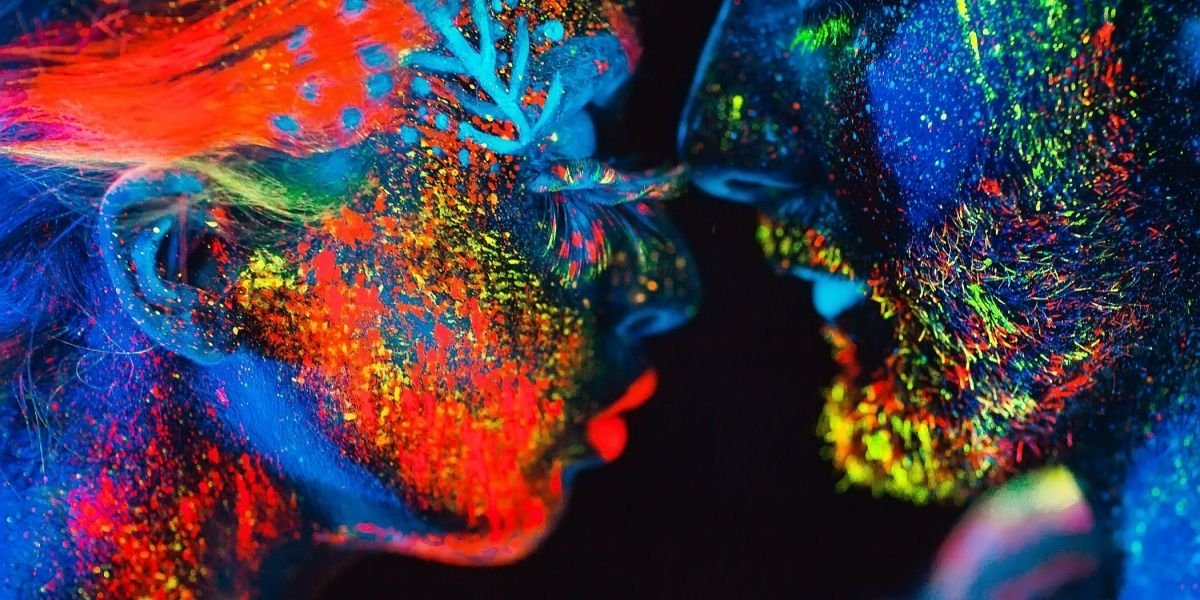Substance abuse and addiction occur more commonly and more severely in the LGBTQ+ community, likely as a result of minority stressors including discrimination and social isolation, and co-occurring mental health conditions. LGBTQ+ people may be reluctant to seek treatment for substance use disorders, fearing judgment and discrimination from healthcare providers and fellow patients. Research shows that they achieve the best outcomes when treatment programs account for their unique life experiences.

The LGBTQ+ community and substance use
LGBTQ+ people experience substance abuse and addiction at higher rates than the general population.
This discrepancy could be a result of: [1]
- Discrimination, including homophobia and transphobia, hate crimes, discriminatory laws, lack of legal recognition of relationships, and employment discrimination
- Social isolation, including rejection by family
- Stressful and traumatic life experiences
- Co-occurring mental health disorders, such as depression, which are more common in the LGBTQ+ community
- Targeted marketing to this community by alcohol and tobacco companies
- Position of bars and clubs as safe spaces for the community
- Lack of access to medical care, including culturally-sensitive addiction treatment
The last factor is crucial. Research has found that specialized LGBTQ+ addiction treatment leads to better outcomes.[2] However, it’s difficult to access: just 7.4% of addiction treatment programs offer tailored treatment for the LGBTQ+ community.[3]
LGBTQ+ substance use statistics
Studies have consistently found higher rates of substance use and abuse among members of the LGBTQ+ community compared to the general population.
Alcohol
- 60% of sexual minority adults (those who describe themselves as lesbian, gay, or bisexual) had consumed alcohol in the previous month, compared to 50% of the general population - 2020 National Survey on Drug Use and Health (NSDUH). [4][5]
- 21.8% of sexual minority adults had alcohol use disorder in the past year, compared to 11% in the overall population - 2020 NSDUH. [4][5]
- 5.29% of LBT middle-aged and older LGB adults (aged 50 and over) had alcohol use disorder in the previous year, compared to 3.36% of heterosexual adults of the same age - research carried out by NYU Grossman School of Medicine and the Center for Drug Use and HIV/HCV Research (CDUHR) at NYU School of Global Public Health between 2015 and 2017. [6]
Cannabis
- 41.3% of LGB adults had used cannabis in the previous year, compared to 18.7% of the overall population - 2020 NSDUH. [4][5]
- 17.7% of middle-aged and older LGB adults (aged 50 and over) used cannabis in the previous year, compared to 6.46% of heterosexual adults - NYU study. [6]
Opioids
- 6.7% of LGB adults misused opioids, including prescription opioids and heroin, in the previous year, compared to 3.6% of the overall population - 2020 NSDUH. [4][5]
- 4.7% of older LGB adults misused prescription opioids in the previous year, compared to 2.3% of older heterosexual people - NYU study. [6]
- Men who have sex with men are 9.5 times as likely to use heroin than men who don’t. [1]
Stimulants
- 2.33% of LGB adults over 50 reported using cocaine in the previous year, compared to 0.65% of heterosexual adults over 50 - NYU study. [6]
- Transgender high school students are 2.5 times more likely than cisgender students to use cocaine and methamphetamines in their lifetime. - Chapman University study, 2017. [7]
- Gay men are 12.2 times as likely to use amphetamines such as crystal meth than straight men. [1]
- Gay and bisexual males and females are two to three times as likely to have used illicit drugs other than cannabis in the preceding year. [8]
Addiction
Barriers to addiction treatment for LGBTQ+ people
Rates of substance use and addiction among LGBTQ+ people may be higher due to their lack of access to suitable addiction treatment. Multiple obstacles keep members of this community from accessing effective addiction treatment, ranging from a lack of social support to ignorance and discriminatory attitudes among healthcare providers.
Stigma and homophobia
LGBTQ+ may experience prejudice, discrimination, and even violence from providers and other patients when they attempt to access addiction treatment. They may also be dissuaded from enrolling in a treatment program over fears they would encounter this discrimination.
Addiction counselors in both urban and rural areas have been found to have had little education about LGBT patients' specific needs. Additionally, nearly half reported negative or ambivalent attitudes about the community.[10] Even subtle biases against LGBTQ+ on the part of the counselor can impact the treatment process and lead to worse outcomes, research has found.[11]
Residential treatment programs can be particularly perilous for transgender individuals, who reported encountering harassment, name-calling, and violence from other patients, as well as a lack of understanding and judgment from staff. This commonly led to transgender people leaving the treatment programs early.[12]
Lack of support
As people recover from addiction, they often lean heavily on their family and friends and benefit from the stability of employment, economic security, and a safe home. However, many LGBTQ+ individuals lack these advantages, complicating their recovery.
- They’re more likely to be ostracised by their family.[13] One survey conducted in the UK found half of LGBT+ young adults are estranged from at least one family member.[14]
- They’re more likely to be unemployed. Before the pandemic, one in ten LGBTQ+ people was unemployed, double the rate of heterosexual and cisgender people. [15]
- LGBTQ+ Americans are more likely to live in poverty: one in five (22%) do compared to 16% of straight and cis-gendered people. [15]
- Additionally, LGBTQ+ people are more likely to be homeless and deprived of the stability needed to recover from addiction. 2020 research found that 3% of cisgender sexual minorities experienced homelessness in the past year and 8% of transgender adults had. Across their lifetimes 17% of sexual minority adults have experienced homelessness, twice the rate of the general population. [16]
Co-occurring disorders
Mental health conditions are closely intertwined with addiction for many people and complicate treatment and often lead to worse outcomes.
- LGBTQ individuals are more than twice as likely as heterosexual people to have a mental health disorder in their lifetimes, according to the American Psychiatric Association (APA). They’re 2.5 times as likely to experience depression and anxiety. [17]
- LGBTQ+ teens are six times as likely to experience symptoms of depression than heterosexual teens. They’re four times as to attempt suicide, have suicidal ideation, or self-harm. [18]
Lack of access to healthcare
Lack of access to regular healthcare and concerns about its cost are another barrier to addiction treatment. Disparities between health insurance coverage among LGB Americans and straight Americans narrowed as a result of the Affordable Care Act (ACA) and the legalization of same-sex marriage and the extension of employment benefits to same-sex spouses.
However, LGB adults are still more likely to avoid necessary medical care because of cost (20% vs 14.1%). [19] Nearly a quarter of LGB adults report difficulty accessing healthcare, compared to 16.1% of non-LGB adults. [20] Discrimination by healthcare providers is part of this difficulty: a survey from the think tank the Center of American Progress (CAP) found that 8% of LGBTQ people and 22% of transgender Americans reported avoiding or postponing medical care in the previous year because of discrimination or disrespect from healthcare staff. [21]
Chemsex: Understanding LGBTQ+ specific drug use practices
The widely accepted practice of casual drug use among gay, bisexual, and other men who have sex with men (MSM) is reflected in what has become known as ‘chemsex.’[24] ‘Chemsex,’ short for ‘chemical sex,’ refers to the intentional use of specific substances to enhance or facilitate sexual encounters.[24] Chemsex has become of particular importance in public health due to the increased risks of contracting infectious diseases like HIV and hepatitis, as well as other sexually transmitted diseases.[25] Chemsex can also contribute to SUD among participants.
Harm reduction and chemsex activist David Stuart emphasizes that chemsex is not just about drugs and sex; it is a cultural phenomenon shaped by unique aspects of gay sex and culture that have evolved over recent decades.[26] Several factors contribute to the cultural and societal influences that shape chemsex practices, including:[26]
- Societal and cultural attitudes towards homosexuality, including religious views and stigma, which can inhibit the enjoyment of gay sex and also contribute to internalized stigma.
- The trauma and stigma of the AIDS epidemic affecting perceptions of intimacy.
- The impact of “hook-up” and geospatial dating apps like Grindr and smartphone technology on gay relationships and sexual experiences.
- A rejection culture tied to body image, race, performance, and self-marketing within gay communities.
- A resulting association of risk and danger with gay sex influencing its enjoyment.
- Gentrification.
Chemsex and substance use disorder
According to David Stuart, within chemsex culture, when it becomes problematic (which is not always the case), the issue often lies not with the drugs themselves but with their use as a solution to deeper problems.[26]
According to the Minority Stress Theory, gay, bisexual, and other MSM may (mis)use substances as a coping strategy for the frequent experiences of external prejudice, internalized homophobia, and rejection expectations.[24] The Cognitive Escape Model lends credence to the theory that MSM use drugs to escape the pressures of reality and the stigma associated with their sexual orientation.[27]
Chemsex is a complex and varied phenomenon shaped by the intersection of cultural, societal, and psychological factors that emphasize the need for a compassionate understanding of the unique challenges faced by LGBTQ+ communities and calls for a more nuanced understanding of SUD among this group.
LGBTQ+ and co-occurring mental health conditions
Addiction and mental health conditions are risk factors for each other, as people self-medicate for their mental health symptoms with substance abuse and those substances exacerbate mental illness. Mental health conditions are more prevalent among the LGBTQ+ community than the general population and are another reason why LGBTQ+ people are at greater risk of substance abuse and addiction.
Why are mental health conditions including anxiety, depression, and PTSD more common among members of the LGBTQ+ community? Researchers have developed the minority stress model to explain the difficult experiences and emotions faced by members of stigmatized groups. For the LGBTQ+ community, these stressors include discrimination, bullying, heteronormativity, lack of acceptance from family, hate crimes, internalized homophobia, and other adverse life experiences. [22] These minority stressors may contribute to mental health conditions and substance abuse.
Co-occurring mental health conditions are associated with more severe substance use disorder symptoms and worse treatment outcomes. To improve outcomes, experts recommend that addiction and mental health conditions are treated concurrently.
Addiction treatment options for LGBTQ+
The National Institute on Drug Abuse (NIDA) has found that addiction treatment specialized for LGBTQ+ people is more effective and delivers the best treatment outcomes. This treatment should address the unique factors in these patients’ lives, including the impact of homophobia and transphobia, social isolation, family estrangement, and mental health conditions.[23]
Common methods used to treat addiction in the LGBTQ+ community include:[24]
- Cognitive behavioral therapy (CBT), including culturally tailored CBT
- Contingency management
- Motivational interviewing
- Social support therapy


-guide-detail.jpg?v=1722501544)

